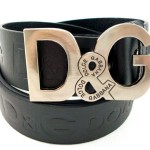How we brand ourselves
This is a very interesting article, especially in light of a lot of what I saw while I was in Hong Kong. In the US, if someone is wearing a Polo branded shirt then the figure of the logo is apt to be an inch or so tall. In Hong Kong, on the other hand, the logo will be anywhere from six inches to over twelve inches tall. The same was true of many, many other logo be-decked items. I suppose that if I was to wonder around New York City it might seem closer to my Hong Kong experience than Seattle.
The author of this piece chooses to focus on the question of power, as relates to visible self-branding. I would choose to interpret it in terms of confidence. I would say that it is the person lacking in self-confidence who feels the need to make themselves look like a Nascar driver (albeit with different logos), as opposed to the individual who is sure of themselves. Either way, though—power or confidence—I think we’re talking about the same thing.
 Labels and Logos? Looks like you’re powerless.
Labels and Logos? Looks like you’re powerless.
Prestige and brand visibility have a funny relationship. Low-status items – say, the local Wal-Mart brands – typically lack visible labels. Middle-tier items – those that are expensive enough to be impressive but not the priciest options out there, like our two examples above – are often splashed in obvious brand markers. But at the highest price point, things take a turn. In fact, when you look at some of the most expensive brands, logo visibility looks much more like Wal-Mart than Gucci.
Essentially, people can spend $1000 on a pair of shoes from a designer like Christian Louboutin and have nothing to show for it other than a pair of black heels that’s virtually indistinguishable from a $25 Payless pair. This doesn’t seem to make any sense. Yet clearly these designers have found a market, and it’s obviously a wealthy (and powerful) one. What gives?
source: http://psysociety.wordpress.com/2012/01/16/labels-and-logos/
Leave a Reply